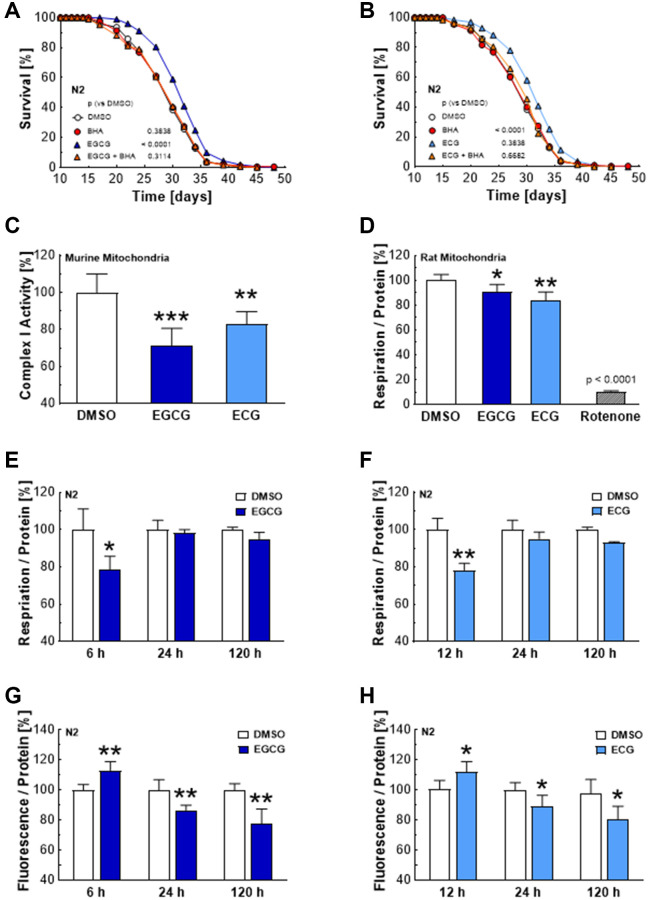Figure 2.
EGCG and ECG inhibit complex I, which results in a temporary hampering of mitochondrial respiration and a boost in ROS production. The representative outcome of lifespan assay of N2 wild type nematodes in the presence of 2.5 μM EGCG co-applied with an antioxidant; DMSO vs. 2.5 μM EGCG vs. 10 μM BHA vs. 2.5 μM EGCG in combination with 10 μM BHA. (A) The representative outcome of lifespan assay of N2 wild type nematodes in the presence of 2.5 μM ECG co-applied with an antioxidant; DMSO vs. 2.5 μM ECG vs. 10 μM BHA vs. 2.5 μM ECG in combination with 10 μM BHA. (B) Complex I activity in murine liver mitochondria after treatment with DMSO, 25 μM EGCG or 25 μM ECG. (C) Mitochondrial respiration of rat liver mitochondria after treatment with DMSO, 25 μM EGCG or 25 μM ECG. (D) Mitochondrial respiration of N2 wild-type nematodes after treatment with DMSO or 2.5 μM EGCG for 6 h, 24 h, or 120 h measured as oxygen consumption rate and normalized to protein content. (E) Mitochondrial respiration of N2 wild-type nematodes after treatment with DMSO or 2.5 μM ECG for 12 h, 24 h, or 120 h, measured as oxygen consumption rate and normalized to protein content. (F) ROS production of N2 wild-type nematodes after treatment for 6 h, 24 h, or 120 h with 0.1% DMSO or 2.5 μM EGCG. (G) ROS production of N2 wild-type nematodes after treatment for 6 h, 24 h, or 120 h with 0.1% DMSO or 2.5 μM ECG. (H) P-values are as indicated in the graphs. See Table 1 for corresponding detailed data and statistical analyses of lifespan assays.

